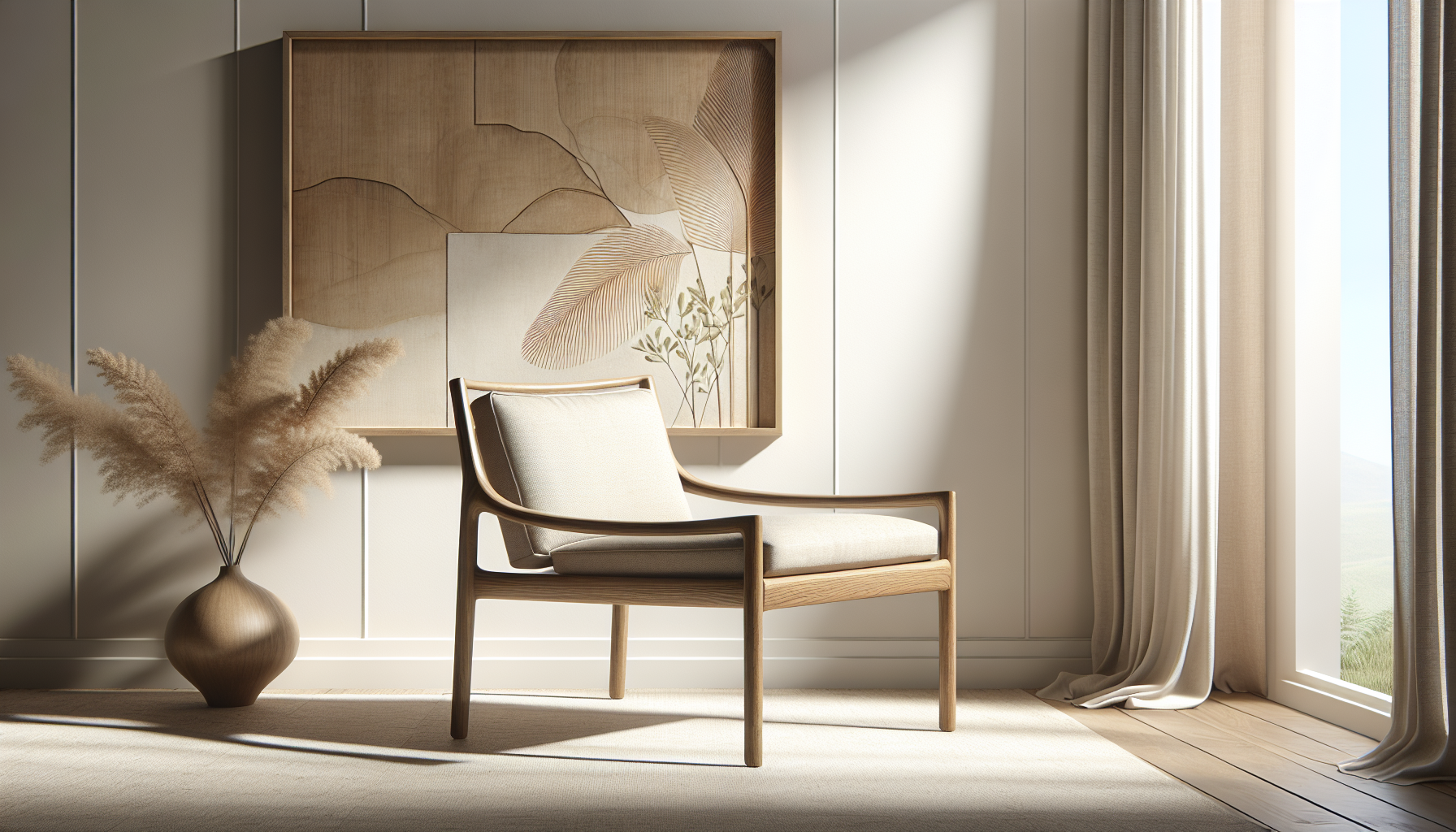Have you ever wondered how to breathe new life into old furniture? Upcycling is a wonderful way to transform items you may no longer use into beautiful, functional pieces that fit your style. Specifically, the Japandi aesthetic offers a fantastic inspiration for those looking to take their old furniture to the next level. Let’s explore how to turn your worn-out furniture into Japandi masterpieces.
Understanding the Japandi Style
What is Japandi?
Japandi is a beautiful blend of Japanese and Scandinavian design philosophies. It emphasizes minimalism, natural materials, and functionality. The overall look is serene and balanced, combining the warm, cozy elements of Scandinavian design with the simple elegance of Japanese aesthetics. This style promotes sustainability, making it a perfect fit for upcycling.
Key Characteristics of Japandi
When looking to transform your furniture, it’s helpful to know the key characteristics of Japandi. This style includes:
- Minimalism: Keeping only what you need and love while eliminating excess.
- Natural Materials: Use of wood, bamboo, stone, and textiles like linen.
- Neutral Palette: Earthy tones such as creams, grays, and muted colors create a calm atmosphere.
- Functional Design: Every piece should serve a purpose while being aesthetically pleasing.
Understanding these principles will help guide your transformation process.
Getting Started with Upcycling
Assessing Your Old Furniture
Before diving into the transformation, take a moment to assess the furniture you want to upcycle. Look for pieces with good structural integrity but may be dated or worn.
- Condition: Is it sturdy? Do any parts need repairs?
- Materials: What materials are involved? Wood is perfect for Japandi.
- Style: Does it have potential? Consider its shape and design; it should be timeless in essence.
Tools and Materials You’ll Need
Once you’ve selected your furniture pieces, gather your tools and materials for the transformation. Here’s a handy list:
| Tool/Material | Purpose |
|---|---|
| Sandpaper | To smooth surfaces before painting |
| Paint or Stain | To refresh the look of the furniture |
| Paintbrushes/Rollers | For applying paint or stain |
| Natural Finishes | Such as oils or wax to seal wood |
| Fabric and Foam | For reupholstering cushions or chairs |
| Basic Hardware | Screws, nails, and glue for repairs |
Your workspace will also benefit from a drop cloth and good lighting.
Transforming Different Types of Furniture
Chairs
Reupholstering Chairs
Chairs are an excellent place to start when upcycling. A reupholstered chair can become a statement piece.
- Remove Old Fabric: Carefully take off the old upholstery. Use a staple remover to make this easier.
- Repair: Ensure the frame is solid and replace any broken parts as needed.
- Choose Fabric: Select a neutral, earthy fabric in line with Japandi. Linen or cotton works well.
- Upholster: Cut your fabric to size and staple it onto the chair frame, ensuring it’s snug.
- Finishing Touches: Sand and stain or paint the chair legs for a cohesive look.
Painting and Staining
Sometimes, you might want to keep a chair’s existing structure but refresh its appearance.
- Prep the Surface: Sand the chair lightly to ensure the paint adheres.
- Apply Primer: Use a primer if painting over darker colors.
- Choose Your Paint: Look for soft, muted colors or natural wood stains. These work great for Japandi.
- Seal It: After your paint dries, consider sealing it with a clear finish that suits the material.
Tables
Refinishing Tables
Tables are often the centerpiece of a room, so transforming a table can significantly impact the aesthetics of your space.
- Strip Old Finish: If you’re dealing with a table that has an old finish, you might want to strip it away completely.
- Repair and Repaint: Sand the entire tabletop, fill in scratches, and repair legs as necessary.
- Stain or Paint: For a natural look, using a wood stain that highlights the grain can be stunning. Alternatively, muted paints can create a modern feel.
- Use Natural Finishes: Seal the table with a natural oil for a soft sheen and added protection.
Creating a Japandi-Inspired Centerpiece
Consider enhancing your tables with decor that aligns with the Japandi aesthetic.
- Natural Elements: Use ceramic vases, wooden bowls, or low-maintenance plants.
- Layering Textures: Add woven placemats or textiles to create a cozy feel without clutter.
Dressers and Cabinets
Updating Dressers
Dressers can be a larger project but can significantly elevate the room’s overall look.
- Remove Hardware: Start by taking off knobs and handles. You can upgrade these for a fresh look.
- Refinish the Surface: Sand and paint or stain your dresser. Choose soft tones or natural finishes that align with Japandi.
- Organize Inside: Consider adding drawer dividers to keep things tidy and functional.
Creating a Minimalist Display
- Clear the Surface: Keep the top of your dresser free from clutter.
- Select a Few Items: Choose a couple of decorative items that you truly love and that reflect your personality.
Adding Japandi Details
Choosing the Right Colors
As you transform your furniture, be mindful of the colors you choose. Japandi uses a neutral palette consisting of muted tones. Here’s how to apply that to your projects:
- Neutral Base: Start with soft whites, grays, or beiges as your foundation.
- Accent Colors: Introduce soft pastel shades or deeper earthy tones for accents.
Incorporating Natural Textures
Texture is vital in the Japandi style. Here are ways to incorporate texture into your furniture design:
- Textiles: Use fabrics like cotton, linen, and wool for cushions, curtains, or throws.
- Wood Varieties: Choose types of wood with interesting grains, like oak or walnut.
- Natural Finishes: Consider leaving wood untreated or using natural oils for a raw look.
Minimalist Accessories
To keep that Japandi feel, accessorize minimally. Here are some tips:
- Select a Few Key Pieces: Choose decor that matches your furniture. A single sculpture or art piece can make an impact.
- Use Functional Items: Items should serve a purpose—like a soft throw that adds warmth or a beautifully crafted bowl that catches the eye but also holds keys.
Final Touches
Maintenance of Your Japandi Furniture
Once you’ve transformed your furniture, caring for it is essential for longevity.
- Regular Cleaning: Use a damp cloth to keep surfaces dust-free. Avoid harsh chemicals to preserve finishes.
- Reapply Natural Finishes: Depending on use, you may need to reapply wood oils every year or so.
Learning to Let Go
As you embrace the Japandi aesthetic, remember the importance of letting go of excess. If you’re upcycling furniture, make sure it serves a purpose in your home. If a piece no longer fits, consider donating or selling it. This aligns perfectly with the sustainable aspect of the Japandi style.
Conclusion
Transforming old furniture into Japandi masterpieces allows you not only to refresh your living space but also to express your creativity. With an understanding of Japandi principles, the right tools, and a little bit of effort, you can create functional and beautiful pieces that will serve you well for years to come. So, gather your tools, assess your furniture, and let your creativity run wild. Happy upcycling!

